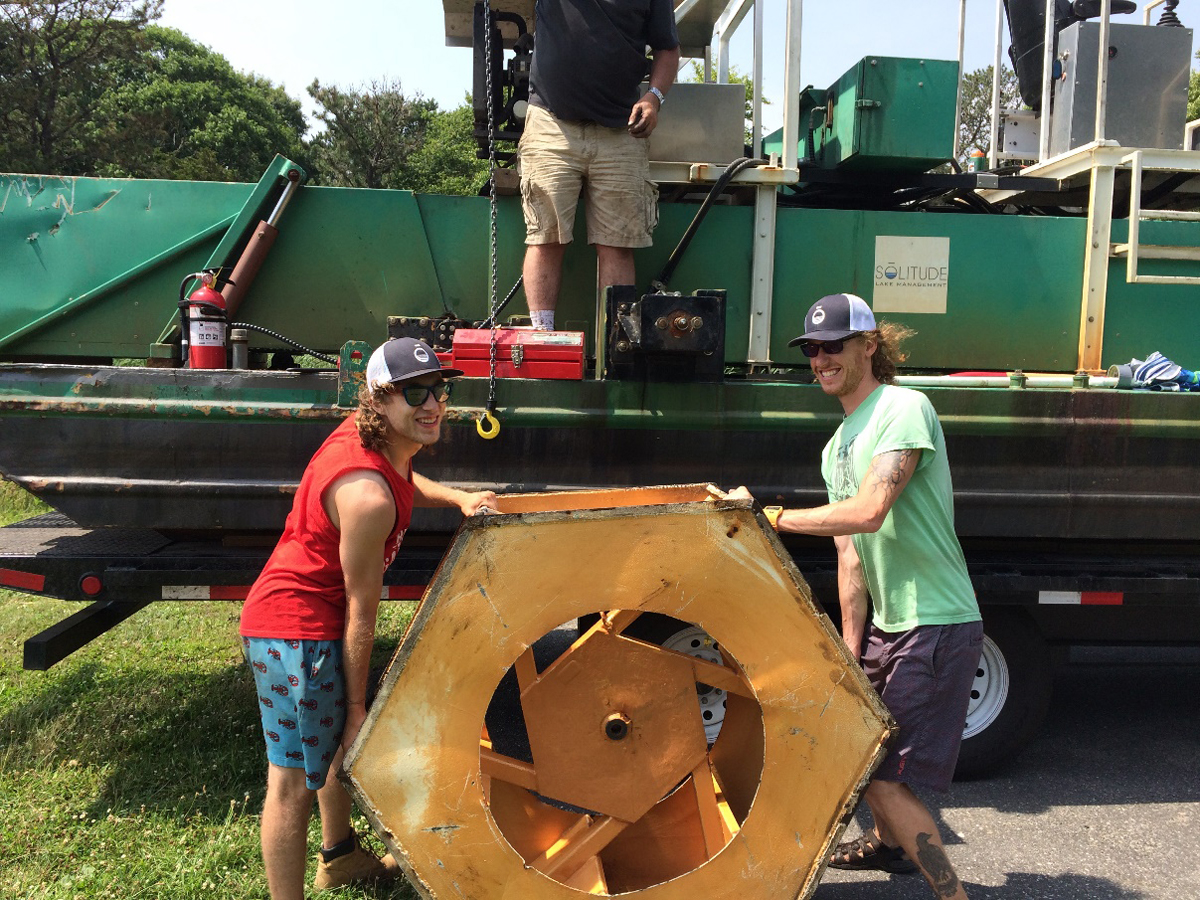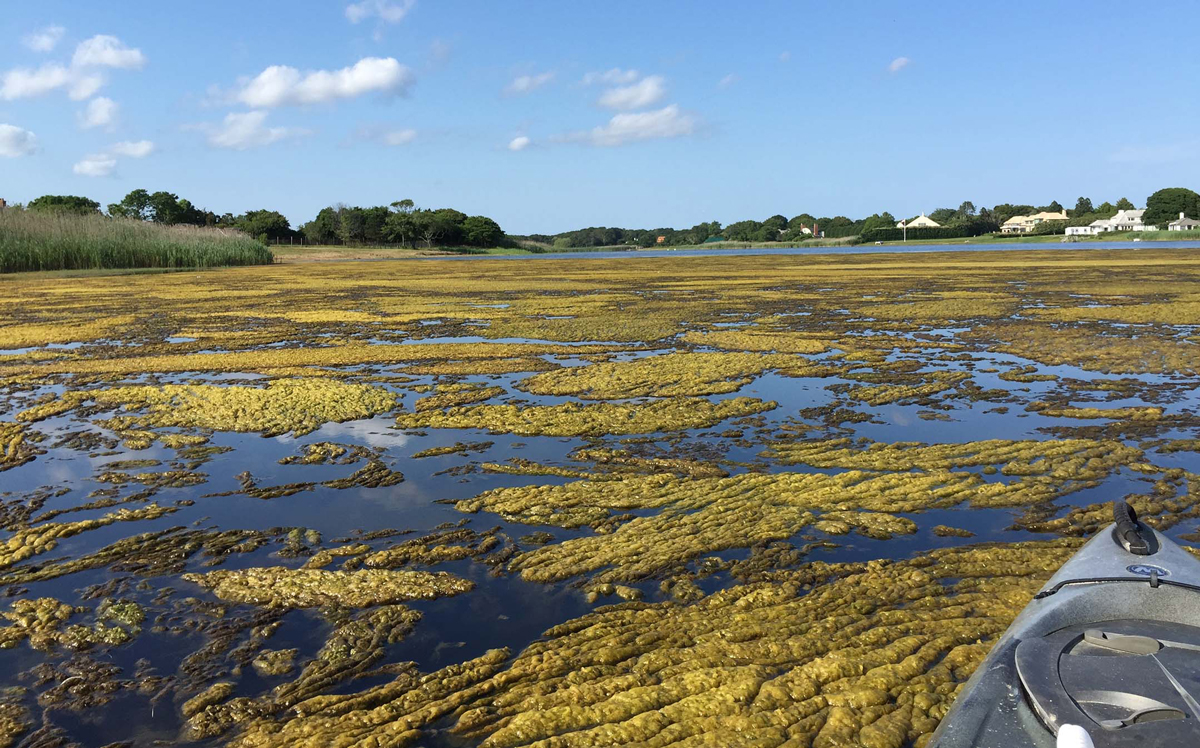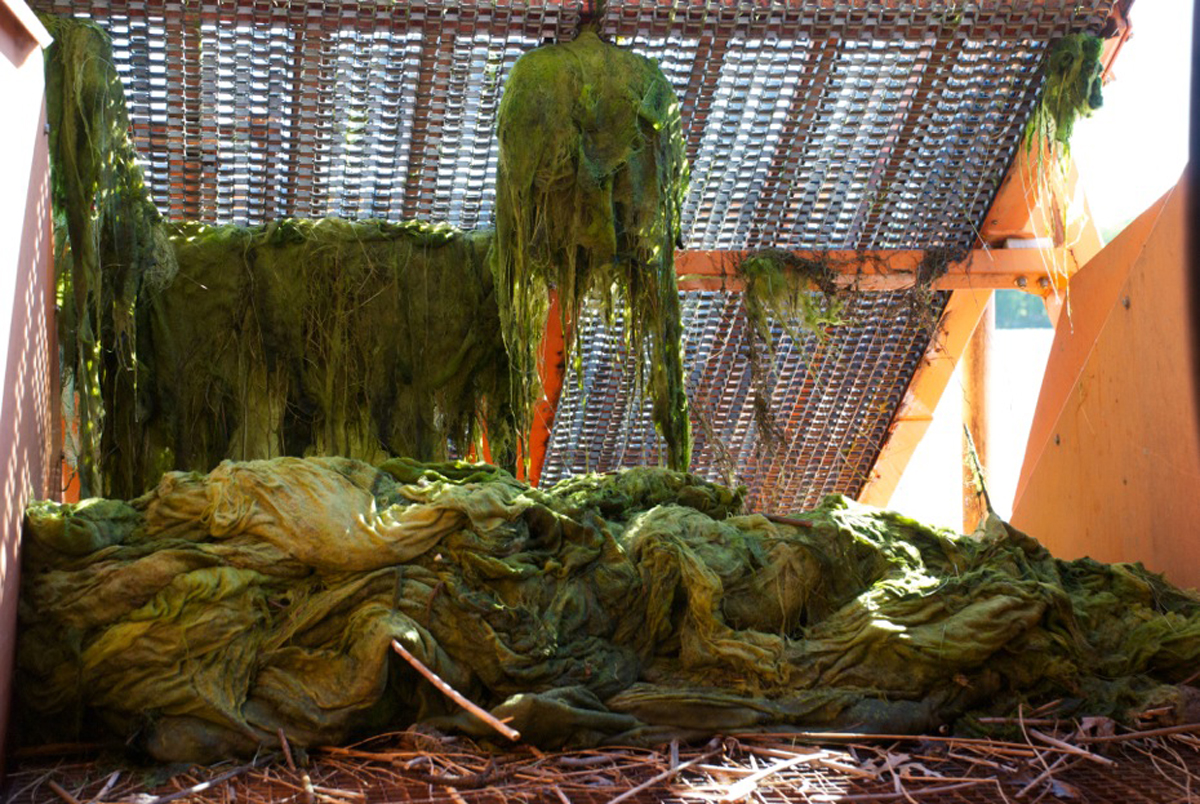Friends of Georgica Pond Foundation (FOGP) completed its second year of harvesting macroalgae and aquatic plants from Georgica Pond on Oct. 1. The harvester arrived at the Pond on May 30 and was operated by two students working at the Gobler Lab at Stony Brook University. Chris Wozny and James Loglisci did an excellent job of operating the machine and assisting the Gobler Lab with the water and plant material samples.

A smaller harvester was engaged this year with the idea that it could navigate better in the pond’s small coves and creeks. Almost immediately, there were technical problems with the harvester and a replacement harvester was brought down on July 12.
Due to a number of factors, growth of the macroalgae, (Cladophora)was considerably reduced in 2017. Harvesting has helped reduce it and other aquatic plants that in past years have grown to nuisance levels, including floating dead plant material covering the surface of the Pond.

Harvesting the material and bringing it to the dump for composting not only removes nitrogen and phosphorus from the Pond but prevents the material from breaking down and contributing to the sediment layer.
The long-term goal is to restore balance to the Pond where inputs of nitrogen and phosphorus are sufficiently reduced so that these plants do not grow or “bloom” and create nuisance conditions.
Because of fewer harvest days and better conditions at the Pond, harvest weights were lower than in 2016.

2016 — 55,740 lbs.
2017 — 32,700 lbs.
In 2016 the harvest represented 13% of the July-August nitrogen load and 23% of the July-August phosphorous load. In 2017, the harvest represented 6% of August-September nitrogen and 12% of August-September phosphorous load. August and September were the months of the most intense blue-green algae blooms in 2014 and 2015.
According to Dr. Gobler, “While the nitrogen reduction is still far below the 80% reduction needed to meet US EPA target values, the 2016 reduction in phosphorus was a significant portion of the 50% reduction required to meet US EPA target values for this element.”
Another objective of the harvester project was to prove the hypothesis that removing the nitrogen and phosphorus during the growing season would minimize the intensity of blue-green algae blooms and anoxia associated with these blooms. In fact, both years saw healthy dissolved oxygen levels and significantly reduced blue-green algae blooms. In 2017 there was only one week of blue-green algae bloom at the Pond.
FOGP would like to thank the Gobler Lab (including Dr. Christopher Gobler and his students, James Loglisci and Chris Wozny) and the NYSDEC for supporting the project and the East Hampton Town Trustees and the Town of East Hampton for their cooperation. Bill Fox Grounds Maintenance hauled the material to the East Hampton Town Recycling Center and the Village of East Hampton allowed the Cove Hollow Road end to be used as an off-loading site. Lastly, we would like to thank the many private individuals who allowed the harvester to moor and offload on their land and for their financial support of this project.
